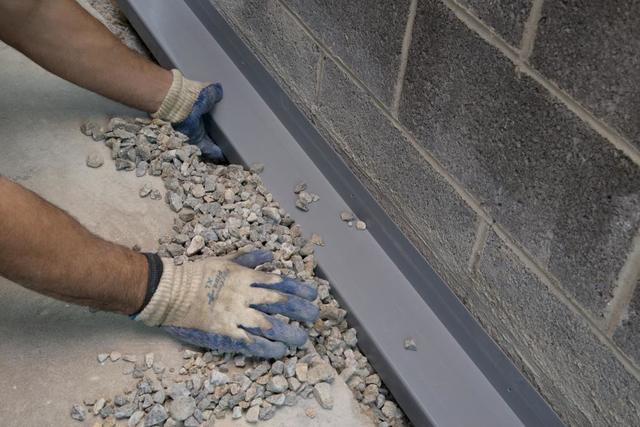Is It Better To Waterproof Your Basement From The Inside Or Outside?

We’ve all been caught in a storm with no umbrella or raincoat. And it’s always a recipe for disaster: everything’s wet, your hairdo is ruined, and things are getting musty.
A basement without waterproofing is kind of like that. Minus the ruined hairdo part.
Your basement doesn’t want to go through a downpour without proper protection just as much as you don’t want to. Which is why basement waterproofing is so important. But if you’ve done your research, you’d know there are two types of waterproofing: interior and exterior. It can get confusing what they both mean, which one’s a better investment, and what will actually keep the water out.
Don’t worry, we put together this blog to easily define both methods for you and discuss the pros and cons of each. Let’s dive in.
What is exterior basement waterproofing?
Exterior waterproofing is a waterproofing method that involves sealing your home from the outside.
It’s kind of like a moat around a castle. It involves digging a trench around your entire house down to the foundation (about 8 to 10 feet down). The foundation walls are then cleaned, sealed, and covered with a waterproof membrane or sealant. And then a drainage system is installed to direct water away from your home.

Advantages of exterior basement waterproofing
The biggest advantage of exterior waterproofing is that it prevents water from entering your basement in the first place.
Unless you have a leaky washing machine, water almost always enters the basement from the outside. Groundwater and heavy rains can seep in through the cracks in your foundation, so exterior waterproofing can prevent water from entering your home.
Disadvantages of exterior basement waterproofing
Exterior basement waterproofing has a few downsides, though.
1. Cost. It's a more involved process that requires digging up your yard, which is expensive and time-consuming.
2. Damages landscaping or hardscaping elements. Exterior waterproofing involves removing everything surrounding the house, including porches, driveways, walkways, landscaping, AC units, decks, and so on.
3. Not serviceable. If any of the work was done incorrectly and water is still entering your basement, there isn’t much you can do to correct or fix it. Unless you want to pay to dig up all that soil again.

What is interior basement waterproofing?
Interior basement waterproofing involves waterproofing from the inside. Any water that leaks into your basement is redirected before it touches your floor. It’s kind of like wearing a raincoat under your clothes.
It involves two things: a water drainage track and a sump pump. It works by sealing the inside of your basement walls and floors so water that tries to enter is channeled out through a sump pump.

Advantages of interior basement waterproofing
The main advantage of interior waterproofing is it’s less expensive and less disruptive than exterior waterproofing. It can be done without excavating the outside of your home, so you won’t have to damage your landscaping or dig up your driveway.
1. Quick installation. Installing an interior basement waterproofing system only takes a day or two.
2. Non-disruptive. No massive trenches will be dug in your yard.
3. Less expensive. Interior waterproofing is a less expensive alternative.
4. Easy to fix and service. Because interior waterproofing is an inside system, it can be easily serviced year-round.
5. It works. It’s an effective method to waterproof your basement.

Disadvantages of interior basement waterproofing
The downside of interior basement waterproofing mostly has to do with the installation process. This method requires stored items, furniture, and built-in shelving or cabinets to be moved from touching the basement walls. And during installation, your basement can’t be used.
So what’s the difference between interior and exterior waterproofing?
The biggest difference between the two methods is this: Exterior waterproofing is a preventative solution and interior waterproofing is a corrective solution. With that said, they are both extremely effective at keeping water out of your home.
In conclusion, exterior and interior basement waterproofing are both effective methods of protecting your home from water damage.
Exterior waterproofing creates a barrier that prevents water from entering your home, while interior waterproofing redirects water that does enter your home. And it's important to note that exterior waterproofing is an expensive and disruptive installation process when compared to interior waterproofing. Ultimately, the best method for you depends on your specific needs and budget.
Make sure you choose a trustworthy contractor
Whichever method you choose, make sure you pick a reliable and trustworthy contractor for the job. Both methods require experienced workers to handle the job.

If you have any questions about basement waterproofing, please reach out to us. And if you're in our service area and have water in your basement, contact us for a free, no-obligation home inspection. We'd love to fix your wet basement once and for all. You can fill out our form here, start a chat in the bottom right-hand corner, or call us at 1-800-827-0702.
Article Categories:



